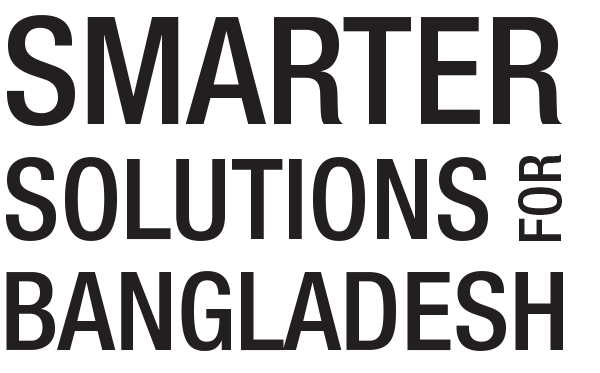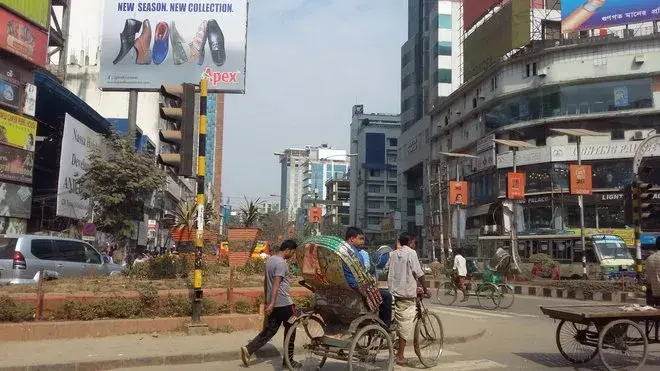Linking economies through transportation infrastructure
by Bjorn Lomborg
More than six kilometers of water separate the Southwest region from the rest of Bangladesh. The longstanding Padma Bridge project holds potential to span that gap both physically and economically, linking the region with Dhaka, Chittagong, and the rest of the country to the east.
After significant delays and cost overruns, however, the relevant question today is whether the project still makes overall social and economic sense. There is limited funding for infrastructure, and there are alternative transportation projects and many other proposals that could also produce benefits for Bangladesh.
Bangladesh Priorities looks at solutions across many challenges to find the best ways to make the nation even better. The project, a partnership between the Copenhagen Consensus Center and BRAC, has commissioned dozens of top economists from the country and world to study how Bangladesh can do the most good for every taka spent on her development efforts.
New research by Ashikur Rahman, senior economist at the Policy Research Institute of Bangladesh, and Bazlul Khondker, economics professor at the University of Dhaka, shows that even given the budget overruns from the project, the Padma Bridge is still cost beneficial. Every taka spent on the bridge would do about 2 takas of social good.
| Strategy | Takas of benefits per taka spent |
|---|---|
| Padma Bridge | 2 |
| Unrestricted roads to North East India | 2 - 2.5 |
In 2010, the Bangladesh Bridge Authority assessed the economy-wide benefits of the Padma Bridge project with financial assistance from the World Bank. The BBA concluded that the project would be financially viable. But after allegations of corruption, the World Bank removed support from the project.
The project was interrupted, and its deadline was pushed back from 2015 to 2018. According to the BBA’s latest estimate, the total cost has risen to Tk 287.93 billion (Tk 28,793 crore)—nearly three times higher than the original projected cost of Tk 101.62 billion (Tk 10,162 crore) in 2007.
The recent research from Bangladesh Priorities updates the cost-benefit projections. One important factor that the analysis demonstrates is that price inflation and currency depreciation accounted for 91 percent of the cost increase from 2007 to 2015. And even with the cost increases, the Padma Bridge still makes financial sense.
Benefits of building road and rail transportation across the river would come from three main sources: decreased vehicle operating costs, increased time-savings, and a boost in GDP due to increased economic activities.
Currently, drivers have to use longer and poorer roads on alternate routes to cross the river. So once the bridge is complete, vehicle-operating costs will fall significantly. Plus, savings in travel time will account for nearly one-quarter of total benefits of the project. Over the 31 years following completion of the bridge, overall benefits to road users from these two sources are projected to be Tk 1.3 trillion (Tk 130,000 crore).
The economists estimate that over that three-decade timeframe, the bridge will reach its full traffic capacity of 75,000 vehicles each day. One-third of those vehicles will be trucks, which carry cargo and boost trade. Due to that increased economic activity, the Padma Bridge stands to permanently increase GDP of the Southwest region by up to 2.5 percent.
Even given delays and cost overruns, completing Padma Bridge has potential to do 2 takas of good for each taka spent. But when it comes to transportation within Bangladesh, there are additional options to consider.
Research by Kazi Mahmudur Rahman, assistant professor of development studies at the University of Liberal Arts Bangladesh, and Md. Tariqur Rahman, an economic consultant, examined the benefits that could come from vehicle agreements between nearby countries that are designed to encourage trade.
Bangladesh and its neighbors continue to forge stronger economic ties, but traffic bottlenecks and gaps in transport infrastructure have hindered progress. This presents an opportunity to increase trade and economic growth through better links with India, Nepal, and Bhutan.
Currently, trucks that carry cargo internationally often have to offload their cargo once they reach a border, so that it can be reloaded onto a different truck on the other side. This is costly and logistically inefficient, and it also creates the potential for graft.
For these reasons, it can take more than six weeks for a 20-foot rail container to reach Dhaka from New Delhi, at a cost of Tk 195,000. And the route is anything but direct—the container must first leave New Delhi and go to the port of Mumbai, then travel to Singapore by ship, before reaching Chittagong port. Finally, it would travel from Chittagong to Dhaka by rail. If there were direct rail connectivity between Dhaka and New Delhi, however, it would take at most five days for the same container to reach the intended destination, and at only about one-third the cost.
Enacting reciprocal trade agreements and improving cross-border transport infrastructure would increase international freight traffic an estimated 2 percent per year for Bangladesh. Depending on the exact nature of the transport project and trade agreement, each taka spent on these efforts would do about 2-2.5 takas of good.
The Padma Bridge will still be cost-beneficial, and other improvements in transport infrastructure could improve trade and economic growth for Bangladesh. What transport strategies would you choose to help the country prosper? Join the conversation at copenhagen.fbapp.io/transportationinfrastructure, where you can also read about other exciting development opportunities for Bangladesh. We want to know what you think as we continue to search for how the country can prosper most.
Dr. Bjorn Lomborg is president of the Copenhagen Consensus Center, ranking the smartest solutions to the world’s biggest problems by cost-benefit. He was ranked one of the world’s 100 most influential people by Time Magazine.
This article was originally posted in The Daily Star.


